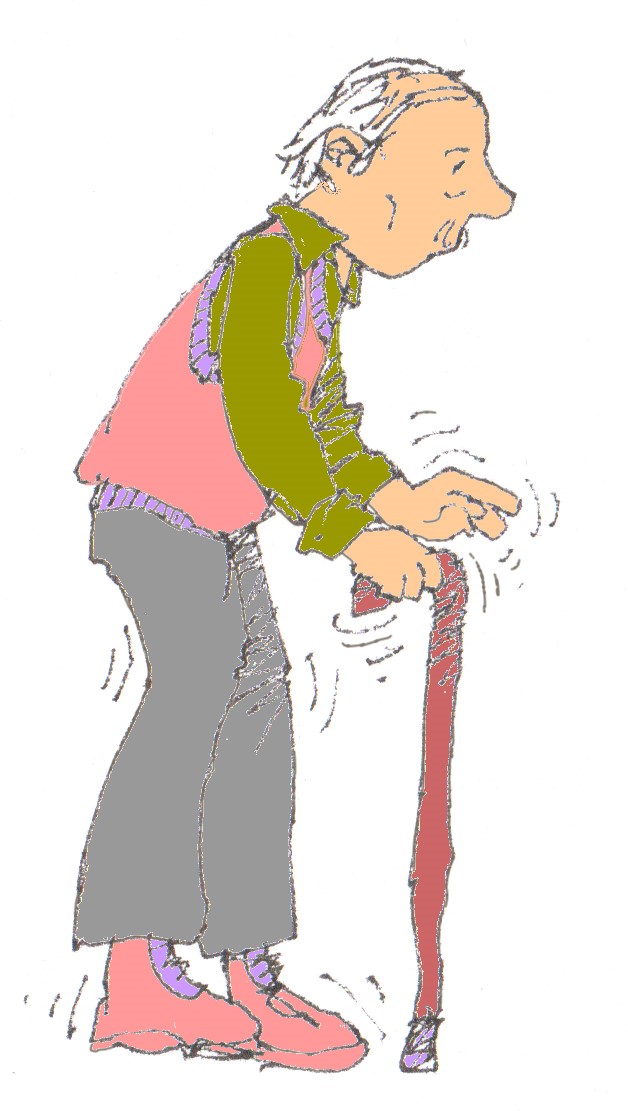Parkinson’s disease
Parkinson’s disease (PD) was originally described as ‘the shaking palsy’ by James Parkinson in 1817. The main features of PD are stiffness, difficulty with movements and a characteristic so-called pill-rolling tremor. Affected individuals have increasing problems with physical activities such as walking, writing and some social functions, like holding a tea cup.
The prevalence of the condition is about 1 in 600 in the over-65s, so with an increasing population of older people it is set to become more common. PD progresses with age and, in a few severely affected individuals, may eventually incapacitate the sufferer. Dementia may also be a complication.
Exercise in the prevention of Parkinson’s disease
Only recently has evidence emerged that regular physical exercise can reduce the risk of PD. A number of smaller studies had failed to prove the link, but a meta-analysis of eight of these studies, involving over half a million subjects, did confirm the relationship. The review compared habitual exercise level with the risk of developing PD and found that those in the highest exercise category had 80 per cent the risk of PD compared with those in the lowest category.
Furthermore, levels of physical fitness also predict the risk of PD and considerably strengthen the evidence for inactivity as a risk factor for the disease. A cohort of 7,347 US veterans were exercise-tested and followed up for up to 18 years. Men with high levels of physical fitness (VO2max >42ml/min/kg) had only 25 per cent the risk for developing PD compared to those in the lowest fitness group (VO2max <28). Once again the measurable variable of physical fitness gives a stronger association with disease that the, often fallacious self-estimation of physical activity.
Exercise in the treatment of Parkinson’s disease
Intensive exercise programmes have been shown to improve mobility and reduce disability in PD patients. A 2010 meta-analysis found that exercise, mainly physiotherapy, improves physical functioning and quality of life, leg strength, balance and walking in Parkinson’s disease patients. A more recent Cochrane Review of treadmill training in patients with PD found that this intervention does improve stride length and gait speed, although curiously does not improve walking distance. Other benefits from exercise training have included improvements in various scales that measure severity of PD symptoms – and also improved balance, increased preferred walking speed and faster timed get-up-and-go tests. Depression may be improved, as may be cognitive function and health-related quality of life. An important finding of all these studies is the wide variability in response. Exercise can be very helpful to some, but by no means all, PD sufferers.
Which exercise?
Several trials have tested different forms of exercise, including gait and balance training, progressive resistance training, treadmill exercise, strength training, aerobic exercise, and music and dancing. Non-contact boxing has been reported in 871 sites across the world with some 43,500 participants. Ping-pong also has its advocates.
Finally, a word of caution. Parkinson’s patients, with inherent balance problems, are vulnerable to falls sustained during exercise programmes. So far, however, this risk has not been shown to outweigh the benefits of regular exercise.
This concern can be mitigated by using the numerous types of exercise equipment currently available which avoid a reliance on balance. A good example is the exercise bike. Vigorous cycling increases exercise-related brain activity and raises brain levels of dopamine, a key factor in the treatment of PD.
Subscribe to the blog
Categories
- Accelerometer
- Alzheimer's disease
- Blood pressure
- BMI
- Cancer
- Complications
- Coronary disease
- Cycling
- Dementia
- Diabetes
- Events
- Evidence
- Exercise promotion
- Frailty
- Healthspan
- Hearty News
- Hypertension
- Ill effects
- Infections
- Lifespan
- Lipids
- Lung disease
- Mental health
- Mental health
- Muscles
- Obesity
- Osteoporosis
- Oxygen uptake
- Parkinson's Disease
- Physical activity
- Physical fitness
- Running
- Sedentary behaviour
- Strength training
- Stroke
- Uncategorized
- Walking



Thank you for encouraging people to get fitter, Hugh – the spin off benefits to our health are such that we could do with a nationwide fitness drive!!
Very interesting
A useful reminder of the need for keeping fit